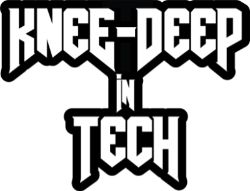In this international episode, the trio tackle the can of worms that is Microsoft Ignite, as well as try to catch up on some of the news that have dropped the last couple of weeks. Subscribe to us on Spotify, on iTunes or listen to the episode right here (available after 11.30 CEST): Show notes: Hyperscale Reverse Migration GA Azure Synapse Analytics September Update Power BI October Update Microsoft Ignite 2022 Book of News Static IP for Private Endpoint Custom NIC Name for Private Endpoint Stream Analytics No-code Editor Stram Analytics Exactly Once Delivery for Blob and ADLS PostgreSQL in Cosmos DB
In this episode recorded at DataMinds Connect in Belgium, Alexander and Heini sit down with Chris Webb of the Power BI CAT team for half an hour of discussions about Power BI, the changing landscape and training! Subscribe to us on Spotify, on iTunes or listen to the episode right here (available after 11.30 CEST): Show notes: Chris Webb’s blog
In this episode Simon is in the US, so Alexander and Heini have free reign talking about Power BI, Synapse, Static Web Apps, ADLS news, Horizontal Fusion and how sessions come to be! Subscribe to us on Spotify, on iTunes or listen to the episode right here (available after 11.30 CEST): Show notes: Power BI September Update Synapse Analytics August Update Enterprise-grade edge in Azure Static Web Apps APIM DevOps Resource Toolkit v1.0.0 Encryption scopes on hierarchical namespace enabled storage accounts Immutable storage for Azure Data Lake Storage GA: Azure Managed Grafana Power BI Horizontal Fusion
Alexander and Heini managed to corner Simon Whitely of Advancing Analytics at Data:Scotland for a chat about Synapse, Spark and much more! Subscribe to us on Spotify, on iTunes or listen to the episode right here (available after 11.30 CEST): Show notes:
Simon and Heini are both scrambling to either run a conference or go for vacation and Alexander just left his current job, but despite this the trio found time to talk about multiple audiences for Apps in Power BI, DAX Studio 3, Kurt Buhler’s AMAZING new blog post on designing for your future self, Simon bashes ADFS (again), AVD can now do single-sign on, Heini has managed to dig up some rather interesting networking news and the Azure Synapse PoC Playbook. The focus segment this week is all about the equipment, how, and where of working from anywhere! Subscribe to us on Spotify, on iTunes or listen to the episode right here (available after 11.
We’re back from summer break! In this episode the trio talk about a slew of news from the summer and dive into a discussion about upskilling and keeping knowledge. Subscribe to us on Spotify, on iTunes or listen to the episode right here (available after 11.30 CEST): Show notes: Power BI August Update Power BI Evaluation Configuration Settings AAS Server Properties Preview Metric Visual Preview EvaluateAndLog DAX Power BI July Summary What’s New in Microsoft Intune New Windows 10 update cadence What’s new in Configuration Manager 2207 Ola Strom’s blog Azure Premium SSD v2 Disk Storage in preview AKS API server VNet Integration
In this final episode before the summer break, the trio talk about the Power BI June update, the Deneb visual becoming certified, a couple of really nice blog posts, some exciting Microsoft Defender updates, news from Intune, Azure load testing, Azure container apps and updates to the preview of Azure Network Manager! Subscribe to us on Spotify, on iTunes or listen to the episode right here (available after 11.30 CEST): Power BI June Uodate Deneb Visual Self-service strategy in Power BI Serverless inconsistencies in Serverless Use Powershell to create calculation groups New action added to Defender for Endpoint’s response actions - Contain
In this episode, a.k.a “confurious by Entra”, the trio talk Power BI, Intune, Windows Autopatch and Azure Container Apps news, discuss the Azure Synapse Link for SQL Server, have a conversation about the changing face of events, and go on a rant about Microsoft naming practices. Subscribe to us on Spotify, on iTunes or listen to the episode right here (available after 11.30 CEST): Power BI Data Marts Enhanced Refresh ExecuteQueries REST API PowerBI Powerpoint integration Azure Container Apps Microsoft Intelligent Data Platform Azure Synapse Link for SQL Secure access for a connected world—meet Microsoft Entra Microsoft Entra Public Preview - Windows AutoPatch
